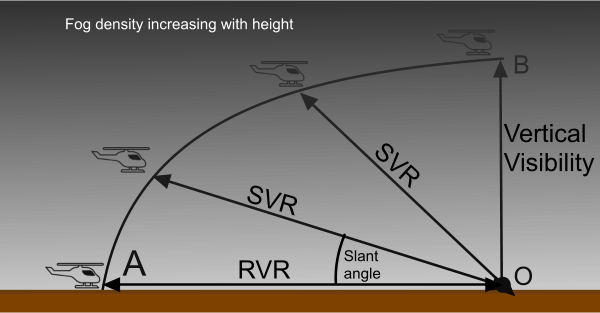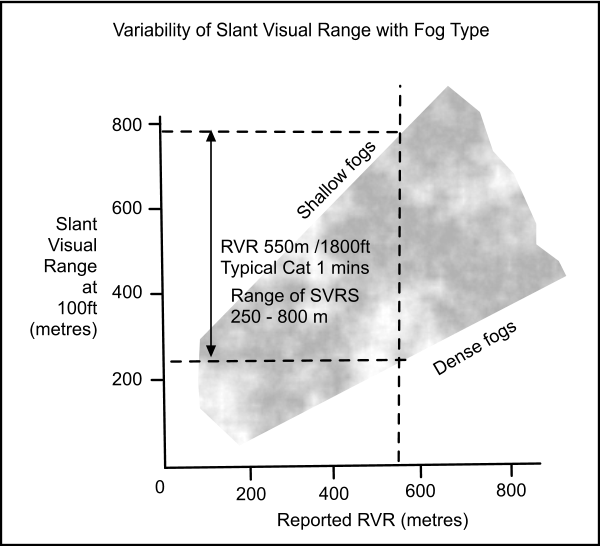"All Weather Operations"
When commercial aircraft landings in really low visibility were first studied seriously from the 1950s on, it was referred to as "All Weather Operations" (AWO). The intention was to able to operate without any external visibility requirement at all, ("Category 3C"), hence in "all weather". The strongest commercial pressure to do so came from airlines with operations exposed to a lot of fog, so that has been studied in a lot of detail, and the "rules" are basically written around those studies.
But many other sorts of weather can limit visibility on approach, such as snow, sand, heavy rain, and smoke as well as fog. One could say that fog is unusual in that in some ways it is now the SAFEST condition to encounter, because it was the one the "rules" were developed to deal with.
Pilots and operators need to be very cautious about making assumptions about what can be seen in the worst permitted conditions if these have been derived from stable fogs. Applying these to other conditions associated with a lot more local variability such as blowing snow or patchy fog can be catastrophic, as has been demonstrated in countless accident reports.
AWO Training: to understand or to meet a syllabus?
Repeated training exercises in flight simulators with old visual systems which do not accurately replicate these variable conditions may well lead pilots to have unrealistically optimistic expectations about the reliability and ease of judging flight path accuracy in the real world.
On the other hand, modern simulator visual systems may have extremely sophisticated "fog models", but these can inadvertently be misused give pilots a misleading impression during training. For example, it is usually a requirement that pilots demonstrate the correct reaction - a go-around - to a loss of visual cues below decision height, which may occur in variable conditions.
In the training exercise, this may be generated by the instructor abruptly reducing the selected visibility. This gives a pretty unambiguous visual signal to the pilot that a go-around is necessary, and that the "box" for "loss of visual cues below DH" can be ticked on the training syllabus. But it has not shown the pilot the danger of the unpredictable changes that may be encountered in the real world, or the difficulty that may be experienced in maintaining the correct flight path in such variable conditions.
Together such practices reinforce the assumption that if the approach is carried out in conditions that meet the "legal" minima, keeping on going after an "adequate" instrument approach will eventually result in sufficient visual reference for a safe landing. This easily combines with "plan continuation bias" to create the perfect conditions for a "pilot error" landing accident.
But although snow, smoke, and other variable conditions do often occur, the discussion here will be limited to fog, which has been extensively studied and is the most frequently encountered low visibility condition.
How fog limits visibility.
The formation and properties of various types of fog are described thoroughly in meteorological text-books, but this section briefly covers some aspects of fog structure before we go into its visual characteristics, and what pilots can expect to see in different conditions.

